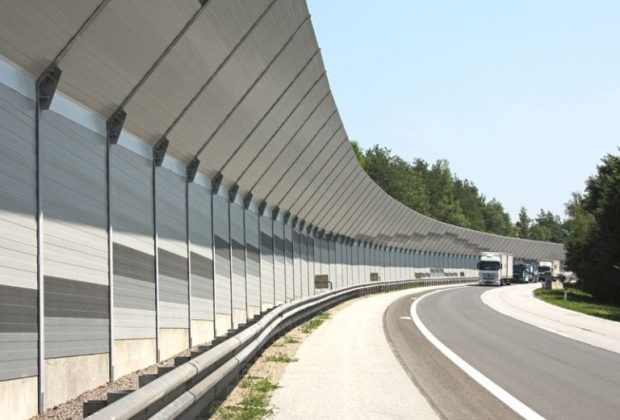Sound barriers — those long, unmissable concrete or acrylic walls lining motorways and industrial zones — have become the default symbol of “noise mitigation” in cities worldwide. They’re practical, visible, and quantifiable. But as urban populations grow and health data increasingly tie long-term noise exposure to serious conditions like cardiovascular disease and cognitive impairment, it’s fair to ask: are sound barriers really a sustainable solution, or just urban planning’s band-aid for a deeper issue?
Let’s unpack their role, assess their limits, and explore how modern urban planning needs to evolve past the wall.
The Science Behind the Barrier
At a basic level, soundproofing barriers work by blocking the direct path of sound waves from a source (usually traffic) to a receiver (usually humans). They can reduce noise by 5 to 10 decibels, which translates to about a 50% reduction in perceived loudness. That’s significant, and for residents living adjacent to busy roads, the difference can mean uninterrupted sleep, outdoor conversations, and even reduced anxiety.
This is why local councils and transport departments favour them. The effects are immediate and easy to measure. The visual presence of sound-blocking barriers also reassures communities that something is being done. But here’s the catch: that reassurance may be misleading.
The Limitations No One Talks About
Sound barriers are effective, but only in narrow contexts.
1. Limited Coverage
Barriers work well for properties at ground level and near the source of noise. But if you’re a few blocks away, on an upper floor, or located just outside the barrier’s shadow zone? You’re still getting the full brunt of the sound. That’s particularly relevant in high-density cities where vertical living is the norm.
2. Ineffective for Low-Frequency Noise
Heavy lorries, railways, and industrial equipment produce low-frequency sounds that penetrate barriers more easily. These rumbling vibrations can travel farther and affect internal building spaces more than the sharp noises barriers are designed to block.
3. Visual and Environmental Impact
Many barriers, especially older ones, are aesthetically intrusive. In some cases, they divide neighbourhoods or disrupt sightlines to natural features. Some materials used in barriers also create heat islands, contributing to urban warming.
4. False Sense of Completion
Worst of all, sound barriers can foster complacency. Once installed, they’re seen as a “job done,” halting further discussions about smarter, more holistic noise reduction strategies.
The Health Implications: Noise Is More Than a Nuisance
Noise pollution is not just about discomfort — it’s about health. Long-term exposure to urban noise is linked to:
- High blood pressure
- Increased stress and cortisol levels
- Sleep disruption
- Reduced cognitive function in children
- Elevated risk of heart disease
The World Health Organization recognises environmental noise as the second biggest environmental cause of health problems in Western Europe after air pollution. So the stakes are high, and treating noise mitigation with half-measures won’t cut it.
Rethinking Noise Management: It Starts with Urban Design
Instead of over-relying on barriers, urban planners need to design noise out of cities from the start, or retrofit existing spaces with a broader, more dynamic toolkit.
Here’s what that can look like:
1. Zoning for Silence
Strategic zoning separates noisy infrastructure, like motorways, commercial areas, or entertainment districts, from sensitive locations like schools, hospitals, and housing estates. It’s basic planning logic, but often overlooked in high-demand, high-density areas.
2. Building-Level Solutions
Architects can embed acoustic resilience into design. This includes:
- Acoustic glazing and double windows
- Sound-absorbing materials inside walls and ceilings
- Smart layouts that orient living spaces away from street noise
Retrofitting older buildings with mass-loaded vinyl, acoustic panels, or soundproof window inserts can also make a measurable difference.
3. Green Infrastructure
Urban trees, hedges, and vegetated berms can absorb sound and reduce reflected noise. While not as powerful as concrete walls, green buffers offer a softer, more integrated solution — one that also improves air quality, mental wellbeing, and biodiversity.
4. Quieter Road Surfaces
Newer road materials, such as porous asphalt, significantly reduce tyre friction noise. Pair this with the rise of electric vehicles, and city noise levels can be reduced at the source, without needing more walls.
5. Traffic Management and Behavioural Policy
Rerouting lorries at night, enforcing quieter construction practices, or capping noise emissions from venues and factories can all help. These changes don’t require heavy infrastructure, just policy clarity and public engagement.
Public Trust and the Optics of Action
There’s also a cultural component here. Sound barriers are popular partly because they are visible, concrete (literally), and reassuring. Residents want to see action. But meaningful, long-term planning often happens behind the scenes, in zoning policies, development regulations, and material science.
Urban leaders must balance optics with outcomes, ensuring that communities understand the logic behind less visible measures and how they ultimately offer more enduring peace and health benefits.
Final Thoughts: It’s Time to Think Beyond the Wall
Sound barriers are not obsolete, but they’re not enough either. They should be viewed as tactical tools for specific environments, not blanket solutions. As we navigate growing urban density, rising environmental stress, and the push for healthier living, our approach to noise control must evolve.
So yes, keep the walls where they’re needed, but stop using them as a substitute for smarter city planning.
The future of urban tranquillity won’t be walled in. It will be designed, built, planted, and legislated into place, quietly, effectively, and sustainably.









